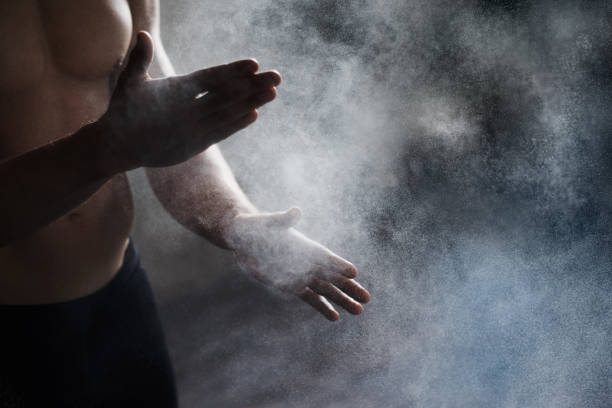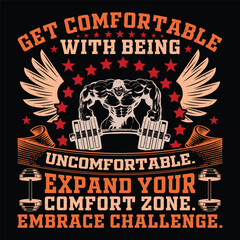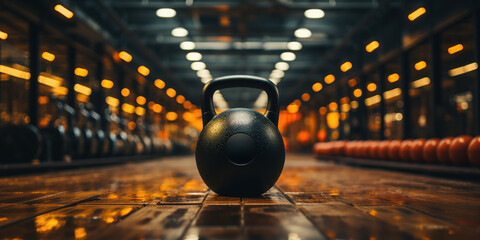The Five “Rights” of Physical Development
For athletes and fitness aficionados alike, the pursuit of physical development is not just a hobby or a lifestyle choice—it’s an ongoing commitment that blends ambition with method, sweat with strategy, and strength with stamina. Whether you’re pounding weights to shatter personal records, or perfecting your form to master the track, there are fundamental principles that can amplify your potential and safeguard your progress. Think of them as the Five “Rights” of Physical Development—a holistic approach designed to optimize your performance, keep you injury-free, and set the stage for your best physical self.
In this comprehensive guide tailored for powerlifters, strongmen, weightlifters, bodybuilders, MMA fighters, CrossFit enthusiasts, athletes in track and field, gymnastics, martial arts, and boxing, we’ll dissect each “Right” and explore how to integrate them into your training regimen effectively.

Right Equipment
The Foundation of Fitness
To excel in any physical discipline, the foundation is key, and the right equipment serves as the bedrock. Whether it’s a well-fitted weight belt, the perfect lifting shoes, or grip-assisting chalk, having the ideal gear can make all the difference. Here’s why and how you should prioritize your equipment:
Gear Up for Safety
Safety should always come first, and the right equipment can protect you from injuries that could otherwise sideline your progress. Proper footwear reduces slippage, belts support your core, and wrist wraps stabilize heavy lifting movements.
Improve Performance
Specialized equipment is not just about protection—it’s also a performance enhancer. Weightlifting shoes, for example, provide a stable base and elevated heel to improve squat and deadlift mechanics. Knee sleeves offer warmth and compression for better knee health, and bench shirts in powerlifting can add pounds to your press.
Mental Edge
The act of gearing up can also be a psychological routine that cues your mind for action. The rhythm of prepping with your favorite gear becomes a ritual that signals focus and adrenaline.
Personalized Approach
Understand that no two athletes are the same, and the best equipment for you may not be the best for someone else. Experiment with different tools and find what feels most comfortable and effective for your body and your sport.
By ensuring you have the right tools for the job, you’re setting yourself up for success in the long term. Your equipment isn’t a crutch; it’s an ally in your quest for continuous improvement.

Right Attitude
The Mindset of a Champion
Physical prowess alone is not enough to reach the pinnacles of success. Developing the right attitude is crucial, for it comprises the determination and willpower that are often the difference between your goal and your next best effort.
Discipline and Consistency
Maintaining a strict training schedule and adhering to it religiously is the mark of discipline. Consistency is a key player in progress, and the right attitude is what compels you to stay the course when motivation wanes.
Goal Setting and Mindfulness
Clear, realistic, and time-bound goals provide direction and purpose to your training. Pair these with mindfulness, the art of staying present during your workouts, to optimize each moment and action towards achieving those milestones.
Resilience and Adaptability
Failures and setbacks are inevitable, but the right attitude is about resilience and adaptability. It’s the ability to view challenges as opportunities for growth, to learn from mistakes, and to bounce back stronger than before.
Competition as Fuel, Not Fear
Seeking to be better than you were yesterday is a powerful motivator, and healthy competition can fuel your progress. The right attitude doesn’t see competitors as obstacles, but as benchmarks and sources of inspiration.
In sum, the right attitude is the soul of your physical development. It breathes life into your practice, infusing your actions with purpose, resilience, and the mindset of a champion.

Right Training
Precision and Progression
Training is not a one-size-fits-all endeavor. It must be tailored to your individual needs and goals. Precision in programming and progression is the crux of the right training. Here’s how to ensure you’re on the path to peak performance:
Program Design
Whether you follow a tried-and-true training regime or consult with a personal coach, the core tenet is that your program is designed to align with your specific goals and abilities. A mix of strength, power, hypertrophy, and conditioning are often pivotal elements in various proportions.
Progressive Overload
This principle dictates that to gain strength, muscles must be challenged beyond their current capacity. Progressive overload can take many forms—increasing weight, sets, reps, or frequency—but it must be applied thoughtfully to avoid burnout or injury.
Periodization
Periodization is the systematic planning of your training cycles. It allows for peaking at the right times, avoiding plateaus, and accounting for recovery periods. This can include microcycles, mesocycles, and macrocycles, each with its own focus and intensity.
Listening to Your Body
Training through pain is a one-way ticket to injury. The right training involves knowing when to push and when to pull back. Slight discomfort is often part of progress, but true pain is a signal to assess and adapt your approach.
By putting the right training principles into practice, you’ll forge a path that evolves in lockstep with your fitness levels and aspirations, maximizing gains and minimizing setbacks.



Right Rest
The Art of Recovery
In our quest for physical development, it’s all too easy to neglect the flip side of training—recovery. The right rest is just as vital as the right training, and here’s why you should pay attention to it:
The Importance of Sleep
Sleep is when your body repairs and grows. Without adequate rest, your hard-earned efforts in the gym will not be fully realized. Aim for 7-9 hours of quality sleep each night to optimize recovery.
Active vs. Passive Recovery
Active recovery involves low-intensity exercise that promotes blood flow and reduces muscle soreness. Passive recovery, on the other hand, includes techniques like stretching, foam rolling, and massage. Balancing passive and active techniques can keep your body primed for the next session.
Nutrition and Hydration
Fueling your body with the right nutrients and staying hydrated is part of recovery. After intense workouts, your body needs a blend of protein, carbohydrates, and healthy fats to rebuild muscle tissue and replenish energy stores.
Rest Days and Deload Weeks
Incorporate regular rest days into your training schedule, and periodically take weeks with lighter loads and intensity to allow your body to fully recover. This approach ensures that you come back to training fully charged and ready for more.
By respecting the crucial role that rest plays in physical development, you’re not only preventing burnout but also accelerating your path to progress by enabling more effective training sessions.




Right Diet
Feeding the Fire Within
Finally, the right diet is the fuel that powers the development machine. Nutrition influences every aspect of your physical health and must not be overlooked:
Macronutrients
Proteins, carbohydrates, and fats are the three macronutrients that provide the bulk of your energy and are crucial for muscle development. The right balance for you depends on your goals and should be calibrated accordingly.
Micro and Phytonutrients
Vitamins, minerals, and plant compounds are vital for numerous bodily functions. Ensuring you consume a variety of fruits, vegetables, and whole grains will fill any nutrient gaps and support overall well-being.
Hydration
Water is essential for every bodily function and becomes even more critical during intense physical activity. Dehydration can impair performance and recovery, so aim to maintain optimal hydration levels throughout the day.
Supplementation
While food should be your primary source of nutrients, certain supplements can fill in the gaps or offer specific benefits. Discuss your needs with a healthcare professional to determine if and what supplements are right for you.
By aligning your diet with your training goals, you’re providing your body with the raw materials it needs to grow, recover, and sustain the rigorous demands of physical development.




Conclusion
Physical development is not a sprint; it’s a marathon with varied terrain that demands strategy, resources, and unwavering commitment. By focusing on the Five “Rights”—Equipment, Attitude, Training, Rest, and Diet—you’re not just building muscle and strength; you’re laying the groundwork for a lifetime of health and vigor. Above all, remember that the most formidable obstacle on the road to your success is not a barbell or a track; it’s the space between your ears. Cultivate a champion’s mindset, and the iron you lift, the weights you hoist, the records you break—they will bear testament to the body and spirit you forged.
